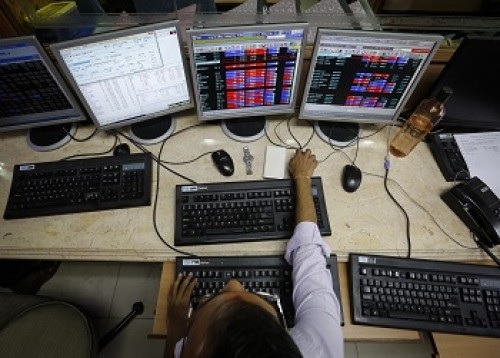6 Chart Indicators That Will Help You Trade Smartly

Follow us Now on Telegram ! Get daily 10 - 12 important updates on Business, Finance and Investment. Join our Telegram Channel
The use of technical indicators helps study the movement of stock prices to determine if the current trend will continue or reverse. It assists the traders in making judgments about the entry and exit points for a certain stock. Technical indicators may either be leading or trailing indicators, depending on how they are used. They may also be based on other characteristics like momentum, volume, trend indicators and volatility.
Trading stocks and options is a difficult process, and you should familiarize yourself with all of the details before getting started. Before trading with your hard-earned money, brush up on your intraday knowledge using Angel One’s Knowledge Centre. Here you can learn more about intraday trading strategies and terminologies that will take your trading to the next level.
6 Chart Indicators That Will Assist You In Trading
* Relative Strength Indicator (RSI) - The RSI is a momentum oscillator that calculates the magnitude of recent price changes. It features a scale that ranges from 0 to 100. It indicates if prices are overbought or oversold to the trader. Above 70, it's called an overbought zone, while below 30 it's considered an oversold zone. The default period is 14 days, but the trader may adjust it to suit his trading strategy.
* Exponential Moving Average (EMA) - The EMA is a sort of Moving Average that gives recent price weights. Because recent prices are more important in terms of price change, they should be given greater weight. This is why the majority of traders prefer the Exponential Moving Average over the Simple Moving Average.
* Moving Average Convergence and Divergence (MACD) - A trend detection indicator is MACD, which informs us whether the trend will continue or reverse. The MACD line and the Signal line are the two lines that make up this indicator. By subtracting the 26-period EMA from the 12-period EMA, the MACD line is calculated. The signal line is a 9-period exponential moving average (EMA). The MACD offers a buy indication when it crosses the signal line from below, and a sell signal when it crosses the signal line from above.
* Price Volume Trend - The relative supply or demand of a specific stock is represented by the change in percentage of the share price trend, while volume reflects the driving force behind the trend. The on-balance volume (OBV) indicator, which monitors cumulative volume, is identical to this one.
* Bollinger Bands - Bollinger Bands is a volatility indicator composed of three bands, the first and third of which are +2 and -2 standard deviations, respectively, while the middle band is the 20-day simple moving average. When the stock's volatility rises, the bands widen; when the stock's volatility falls, the bands compress.
* Fibonacci Retracement - Fibonacci retracement levels are horizontal lines based on Fibonacci numbers that indicate levels of support and resistance. Each level displays a percentage that indicates how much of a prior move has already been retracted by the price. Fibonacci ratios such as 23.6%, 38.2%, 61.8%, and 78.6% are Fibonacci retracement levels.
Should You Simply Use Technical Indicators To Make Decisions?
Technical indicators should be utilized in conjunction with price activity on technical charts, since they may occasionally provide erroneous indications. The technical indicators' indications are confirmed by price activity. Traders may also employ a combination of two or three indicators to validate each other's signals.
If you want to learn more about intraday trading, consider visiting Smart Money by Angel One. Smart Money1 is an investor education platform with tons of modules and certifications to help you master the market.
With more such advanced offerings, Angel One enables its users to make smarter decisions in the market. Start your trading journey with Angel One and be a part of The Smart Republic, enjoy the benefits of Zero Brokerage2 and Smart Recommendations3. Get started now by visiting the website and take your trading to the next level.
Disclaimer
1Smart Money is not an exchange approved product and any dispute related to this will not be dealt on exchange platform
2Brokerage will not exceed SEBI prescribed limit
3ARQ is not an exchange approved product and any dispute related to this will not be dealt on the exchange platform
4This blog is exclusively for educational purpose
5Investments in securities market are subject to market risk, read all the related documents carefully before investing. Brokerage will not exceed the SEBI prescribed limit. https://bit.ly/2VBt5c5










Top News

Gufic Biosciences trades jubilantly on getting nod to manufacture, sell, distribute Isavucon...
Tag News

Quote on Silver : Silver price falls in recent weeks Says Prathamesh Mallya, Angel One





 320-x-100_uti_gold.jpg" alt="Advertisement">
320-x-100_uti_gold.jpg" alt="Advertisement">







